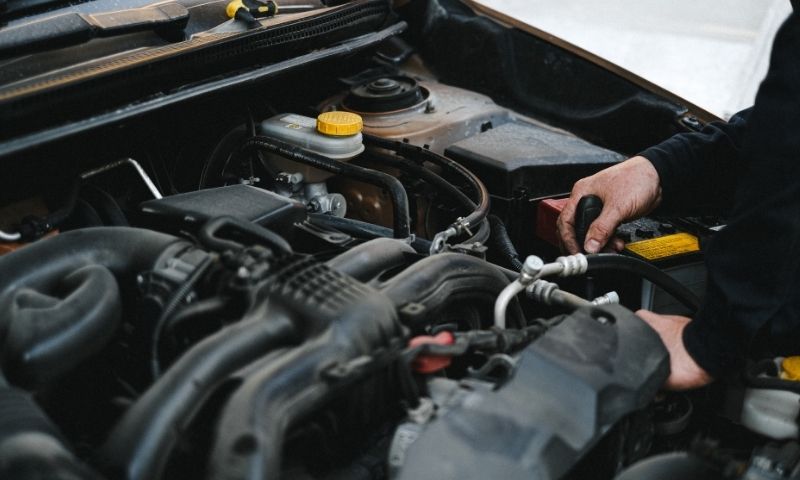The engine in your car works best at a high temperature. When the engine is cold, components wear out easily, emits more pollutants, and the engine becomes less efficient. Thus, another important task of the cooling system is to allow the engine to warm up as quickly as possible, and then to maintain a constant engine temperature. The main function of a cooling system is to ensure that the engine runs at its optimum operating temperature. If the cooling system or any part of it fails, it will overheat the engine, which can lead to many serious issues.
Have you ever imagined what would happen if your engine cooling system did not work properly? Overheating can cause cylinder head gaskets to explode and even crack engine blocks if the problem is serious enough. And all this heat must be fought. If the heat cannot be removed from the engine, the pistons are literally welded to the inside of the cylinders. Then you just must throw the engine away and buy a new one. So, you should take care of your engine cooling system and learn how it works.
Components of a cooling system
Radiator
The radiator acts as a heat exchanger for the engine. It is usually made of aluminum and has many small diameter pipes with fins attached to them. Furthermore, it exchanges the heat of the hot water coming from the engine with the ambient air. It also has a drainage plug, an inlet port, a sealed cover, and an outlet port.
Water pump
When the coolant cools after being in the radiator, the water pump sends the fluid back to the cylinder block, heater core, and cylinder head. Eventually, the liquid enters the radiator again, where it cools down again.
Read more about water pumps here.
Thermostat
It is a thermostat that acts as a valve for the coolant and only allows it to pass through the radiator when a certain temperature has been exceeded. The thermostat contains paraffin wax, which expands at a certain temperature and opens at that temperature. The cooling system uses a thermostat to regulate the normal operating temperature of the internal combustion engine. When the engine reaches standard operating temperature, the thermostat is triggered. Then the coolant can enter the radiator.
Read more about thermostats here.
Other components
Freeze Plugs: This is actually a steel plug designed to seal openings in the cylinder block and cylinder heads created during the casting process. In frosty weather, they can pop out if there is no frost protection.
Timing head/cover gasket: Seals major engine parts. Prevents mixing of oil, antifreeze, and cylinder pressure.
Radiator overflow tank: This is a plastic tank that is usually installed next to the radiator and has an inlet connected to the radiator and one overflow hole. This is the same tank that you pour water into before driving.
Hoses: A series of rubber hoses connect the radiator to the engine through which the coolant flows. These hoses can also start leaking after years of use.
Read more: The importance of an automotive thermostat in a car’s cooling system
How does the cooling system work in a car?
To explain how a cooling system works, you must first explain what it does. It’s very simple – the car’s cooling system cools the engine. But cooling this engine can seem like a gigantic task, especially when you consider how much heat a car engine generates. Think about it. The engine of a small car traveling on a highway at 50 miles per hour will generate approximately 4,000 explosions per minute.
Along with all the friction from moving parts, this is a lot of heat that needs to be concentrated in one place. Without an efficient cooling system, the engine will heat up and stop running within minutes. A modern cooling system should ensure the coolness of the car at an ambient temperature of 115 degrees, as well as warmth in the winter weather.
What Happens Inside?
The cooling system works by constantly passing coolant through channels in the engine block. Coolant, driven by a water pump, is pushed through the cylinder block. As the solution passes through these channels, it absorbs heat from the engine.
Leaving the engine, this heated fluid enters the radiator, where it is cooled by the air flow entering through the car’s radiator grill. The fluid will cool as it passes through the radiator, returning to the engine again to pick up more engine heat and carry it away.
There is a thermostat between the radiator and engine. Depending on the temperature, the thermostat regulates what happens to the liquid. If the fluid temperature drops below a certain level, the solution bypasses the radiator and is instead directed back to the engine block. The coolant will continue to circulate until it reaches a certain temperature and opens the valve on the thermostat, allowing it to pass through the radiator again for cooling.
It seems that due to the very high engine temperature, the coolant can easily reach its boiling point. However, the system is under pressure to prevent this from happening. When the system is under pressure, it is much more difficult for the coolant to reach its boiling point. Occasionally, however, pressure builds up and must be relieved before it can deflate the hose or gasket. The radiator cap relieves excess pressure and fluid by accumulating in the reserve tank. After the liquid in the storage tank has cooled to an acceptable temperature, it is returned to the cooling system for re-circulation.
Keep reading: How to detect cooling circuit problems
Dolz, quality thermostats and water pumps for a good cooling system
Dolz is a european company that adheres to a set of standards in terms of innovation, efficiency, reliability, and sustainability in its worldwide sourcing solutions that help their partners and customers move water pumps where needed. With more than 80 years of history, Industrias Dolz is a worldwide leader in manufacturing water pumps with a wide range of products adding distribution kits and thermostats for the spare parts industry. If you are interested in our products, contact us and we will inform you.


